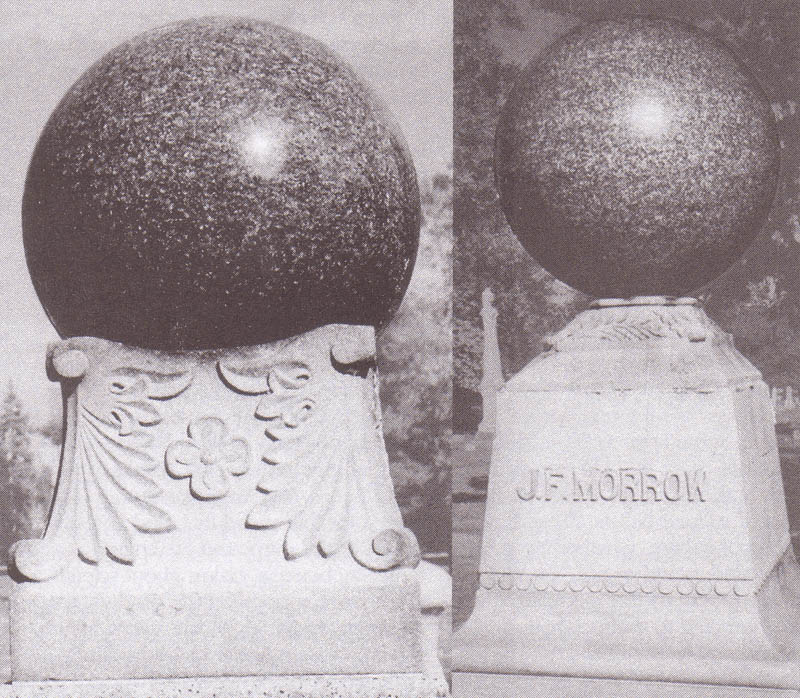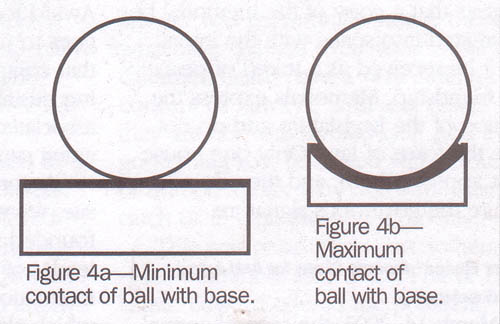
Figure 1--Reza Saberi stands next to Marion Cemetery's
slowly rotating granite sphere. The white dot on the ball is an unpolished
spot that originally rested against the unpolished base.
Is the Slow Rotation of this Massive Granite Ball Paranormal or Normal?

This ball (Figure 1) weighs 5,200 pounds (2,359 kg), is 36-inches (91 cm) in diameter, and is made of granite. It rests atop a 5-foot (1.5 m) pedestal base measuring 28 inches (71 cm) square at the top. The ball and its pedestal were erected in 1896 to memorialize the family of Charles Merchant and it has been moving ever since, slowly turning upon its base, revolving about a horizontal axis in a direction from north to south. It was not known that it was turning until the spring of 1904 when the cemetery employees noticed that it had apparently shifted a little. Since then it has been carefully watched and measured, revealing that it is actually turning continuously. The movement of the ball is very slow--about 2 inches (5.08 cm) annually. There is no evidence or probability of a hoax since the ball requires heavy machinery to move it.
The ball was never securely fastened to the base. The white circle on the ball represents the unpolished spot where the ball was originally placed on the unpolished base. It was assumed that the friction between the two rough surfaces would prevent any displacement. Now the rough white spot is nearly halfway up the south side.
Since I do not believe in paranormal phenomena such as ghosts, demons, haunted houses, aliens, UFOs, and all other such Western folklore, I decided to visit the cemetery and find out for myself. I took my level, tape measure, and rope and went to the cemetery. Driving around I found two other balls (Figures 2 and 3). These two balls do not rotate and I quickly found out why. Ball 2 (belonging to the tombstone of A. & M. Meklingel) is laid in a deep cup-shaped socket that provides maximum surface contact which creates more friction with its base. I could not see if it was cemented to the base. Even if it was not cemented, movement would be very difficult due to the large contact surface. Ball 3, belonging to the tombstone of J. F. Morrow, was clearly cemented to the base and therefore could not move at all.

There have been many non-paranormal explanations for the ball's movement such as vehicular vibration, tidal force, the pull of the Moon, and the wind, which cannot satisfactorily explain the rotation of the ball. For example, the ball was moving before the invention of the automobile, and the effect of the Moon's gravity, wind, and tidal force is insignificant.
I think the ball movement gets its energy from two sources: contraction and expansion caused by weather. Since the ball is on a flat surface, it has minimum contact with its base (Figure 4a), in contrast to ball 2 that is in a cup-shaped socket (Figure 4b).

But what about in the summer time when the weather is around 80-90F (27-32C)? There is no documented report of measuring the movement of the ball only during the warm seasons, so we do not know if the ball moves in the summertime. However, even if it was found that the ball also moves during the summer, there is an explanation for the cause. In the summer the side of the ball which is exposed to the sun expands a little bit more than the other side, thus the center of gravity of the ball advances a little bit, giving rise to a slight creeping. In other words, the circumference of the ball is lengthening on the side that is exposed to the sun resulting in a pulling stress between the ball and the base on which it rests. This causes the ball to move a fraction of a millimeter.
If anybody has a better theory to explain this, I would be very happy to hear from you.